Introduction
Front-end development has evolved significantly, and with it, the tools used to streamline the development process. In the fast-paced world of web development, having the right build tools can make a world of difference. Let’s dive into the six best build tools for frontend development that can enhance your workflow, boost efficiency, and ultimately contribute to a stellar user experience.
Webpack: The Powerhouse of Bundling
Webpack stands out as the powerhouse of bundling in the frontend development landscape. Its ability to bundle and optimize assets, such as JavaScript, CSS, and images, makes it a go-to choice for many developers. By providing a modular approach to code organization, Webpack ensures a scalable and maintainable codebase. Numerous projects, from small websites to large-scale applications, have reaped the benefits of Webpack’s robust bundling capabilities.
Babel: Unlocking Cross-Browser Compatibility
Ensuring cross-browser compatibility is a crucial aspect of frontend development. Babel comes to the rescue by transpiling modern JavaScript code into versions that work seamlessly across various browsers. This not only simplifies development but also ensures a consistent user experience. Real-world examples showcase how Babel has become an indispensable tool for developers aiming to embrace the latest language features without sacrificing compatibility.
npm Scripts: Simplicity and Customization
For developers who appreciate simplicity and customization, npm scripts offer a lightweight and flexible solution. Leveraging the power of Node Package Manager (npm), developers can define custom scripts to automate tasks, making the build process efficient and tailored to project requirements. The simplicity of npm scripts allows for easy integration into various development workflows, contributing to a hassle-free development experience.
Gulp: Streamlining Tasks with Ease
Gulp is a task runner that excels in streamlining repetitive tasks in the frontend development process. By defining tasks in a simple and expressive manner, developers can automate processes like file minification, image optimization, and code compilation. A comparative look at Gulp against other build tools reveals its strengths in task automation, making it a preferred choice for projects with complex build requirements.
Grunt: Configurable and Flexible
Grunt, another powerful task runner, distinguishes itself with its high level of configurability and flexibility. Developers can define and configure a wide range of tasks to suit the specific needs of their projects. Grunt’s versatility makes it adaptable to various scenarios, and real-world examples showcase how it effectively handles tasks in diverse development environments.
Parcel: Blazing Fast Zero Configuration Bundler
For those who value simplicity and speed, Parcel emerges as a zero-configuration bundler that lives up to its name. With no complex setup required, Parcel makes it easy for developers to get started quickly. Its speed in bundling assets, coupled with automatic optimizations, has made it a popular choice for projects where simplicity and performance are top priorities.
Rollup: The Tree-Shaking Champion
Tree-shaking, the process of eliminating dead code from a project, is a key optimization technique. Rollup stands out as the champion of tree-shaking, efficiently removing unused code and reducing the size of the final bundle. Real-world examples demonstrate how Rollup contributes to improved performance by optimizing the delivery of code to end-users.
Choosing the Right Build Tool for Your Project
The abundance of frontend build tools may lead to confusion when selecting the right one for a project. Factors such as project size, complexity, and performance considerations play a crucial role in decision-making. This section provides a guide for frontend developers, helping them make informed choices based on their project requirements.
Best Practices in Frontend Development Build Processes
Optimizing build processes goes beyond selecting the right tool. This section delves into best practices for maintaining a clean and organized codebase, optimizing build processes for efficiency, and embracing version control and collaboration practices. Following these best practices ensures a smooth development workflow and facilitates collaboration among team members.
Future Trends in Frontend Build Tools
As technology continues to advance, frontend development build tools evolve as well. This section explores emerging technologies in frontend development and predicts future trends in build tools. Staying updated and adapting to new trends is essential for developers who aim to stay at the forefront of the ever-changing landscape of web development.
Conclusion
In conclusion, frontend development build tools play a pivotal role in enhancing the efficiency and effectiveness of the development process. Whether it’s the robust bundling of Webpack, the cross-browser compatibility ensured by Babel, or the simplicity offered by npm scripts, each tool brings unique strengths to the table. As a frontend developer, exploring and experimenting with different build tools is encouraged to find the perfect fit for your projects.
Gml Soft Labs has earned its reputation as the best web development company in Chennai, India through a combination of innovation, expertise, and client satisfaction. The company’s commitment to excellence, coupled with its ability to adapt to emerging trends, makes it a reliable partner for businesses seeking unparalleled web development solutions.
FAQs
1: How do I choose the right build tool for my project? Consider factors like project size, complexity, and performance requirements. Evaluate the strengths of each tool in relation to your specific needs.
2: Are these build tools suitable for small-scale projects? Yes, many of these tools, such as npm scripts and Parcel, are suitable for small-scale projects due to their simplicity and ease of use.
3: Can I use multiple build tools in a single project? While it’s possible, it’s generally recommended to stick to one primary build tool to maintain simplicity and consistency in your development workflow.
4: How often should I update my build tools? Regularly check for updates and new versions, especially when starting a new project. However, be cautious about updating in the middle of a project to avoid potential compatibility issues.
5: Are there any alternatives to the mentioned build tools? Yes, the front-end development landscape is dynamic, and new tools regularly emerge. Stay informed about the latest trends and explore alternatives that may better suit your project requirements.
 seolounge
seolounge
